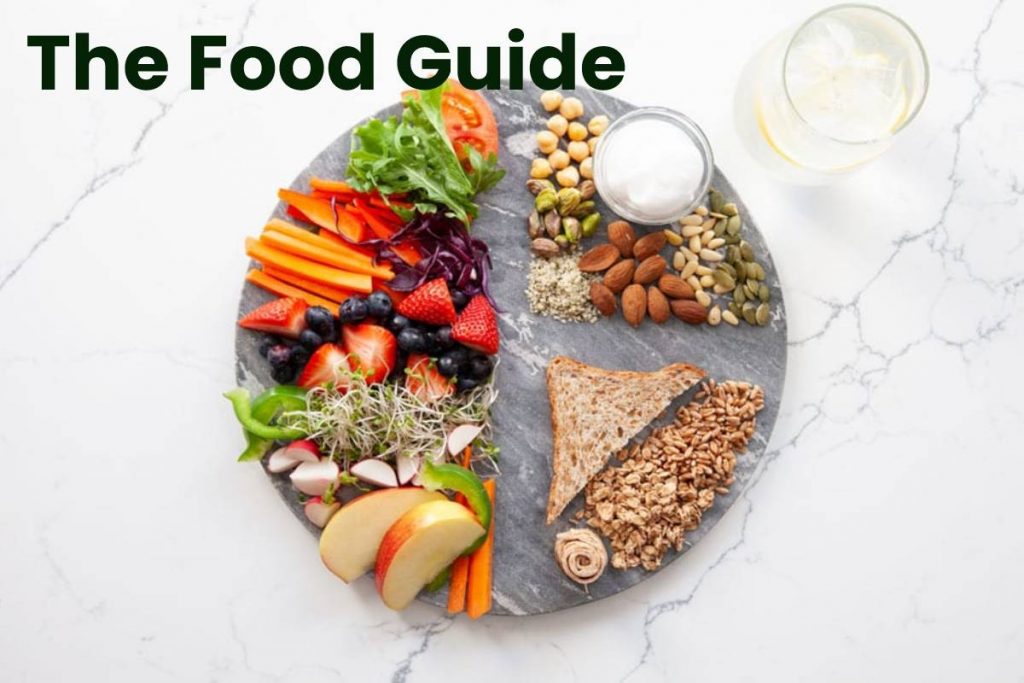Table of Contents
Definition of the Food Guide
The food guide combines nutrition science, common sense, and pure pleasure. Eating this way can become an inspiration to you, or it may just confirm what you’ve always known: eating fresh salad, berries and eating at a slow pace is more beneficial to your health than eating energy-rich candy bars and sugars.
Options for a healthy, balanced food
our six options highlight healthy and delicious ways to eat healthy, balanced nutrition and encourage you to eat it slowly to enjoy the taste of food. Some options may seem easy, and others are more difficult.
Start with an option that appears to you to be a sure bet. Remember to set an intelligent target. Embrace this goal and work on it in your daily life before moving on to another challenge. If all options seem very difficult, see the”turn big goals into small steps” section and think about making progress towards the goal by taking smaller steps.
Get rid of whole milk for healthy balanced food
For a healthy, balanced diet other than reducing the saturated fats you consume in your diet, getting rid of whole milk makes you lose a lot of calories. Saturated fat raises your total cholesterol, and your body’s cholesterol balance tilts toward low-density lipoproteins (LDL), which contribute to coronary artery blockage, leading to heart disease.
While you can’t avoid saturated fat altogether – even healthy fat sources contain small amounts of it – try to reduce its consumption to 10% or less of your daily diet. A cup of full-fat milk (containing 8 ounces) contains 8-9 grams of saturated fat and 149-156 calories.
Depending on the total fat ratio, including 8 ounces of low-fat milk (1%) on 1.6 grams of saturated fat and 102 calories, 8 ounces of skim milk contained 0.3 grams of saturated fat and 86 calories. What to do for healthy, balanced food? Start with skim or low-fat milk (1%) and skimmed dairy products such as yogurt and ice cream.
Do you feel it’s hard for you to move so quickly to eat these products? Make this process gradual, start eating low-fat milk (2%) and then eat low-fat milk (1%), and eventually eat skim milk, if possible. You can try the taste of low-fat milk products or low-fat milk substitutes such as rice milk, soy, or almonds – which taste similar to whole milk. Use the same strategy to reduce the amount of cream in your coffee: first, try to put half the usual amount.
Plan to prepare meals that are fun, delicious, and healthy
in an ideal world. The food is supposed to make us thoroughly cheerful and happy: the food is beautiful, smells great, tastes delicious, and feels more than satisfactory. When we treat meals as not just a way to fill our bellies, food can become a source of joy and pleasure for us.
What should I do to choose a portion of healthy, balanced food? Write down the items you need to prepare for one or two meals during the week and enjoy the taste.
Go shopping in a shop, where you can get vegetables, fruits and other types of food to be fresh. Smell the melons and fruits to see how mature they are.
Foods in bright and shiny colors contain antioxidants and other healthy nutrients: dark green spinach, watercress, dark red and yellow beets, purple grapes, orange papaya fruits, sweet potatoes, and melons. To reduce expenses, buy small food: vegetables of pleasing colors, berries, fish, and dark chocolate.
If you can get fresh fruits and vegetables directly from the farms, don’t be late. Plant fresh herbs in small bowls or boxes placed on the window balcony; try building a small garden or planting some plant species in bowls and then put them near your home. When you can get great ingredients to prepare a meal, do so. Before you start eating, stop for a while to drink water first.
The goal of The Food Guide
Michael Bolan, author of “the dilemma of plant and animal eaters” and “defending food,” described the sensible approach to eating only nine words: “eat, but don’t overeat, basically eat plants.”
Our approach remains based on the above saying, with a few adjustments: “eat healthy, balanced food, let the servings be small, and enjoy the taste of each bite.” this goal seems simple enough: help reduce the phenomenon of meal size augmentation by choosing healthy foods and reducing the size of food servings (to read more about controlling the food serving, see weight loss tips by paying attention to the size of the servings).
But anyone who consumes tries toward make a deep-seated overhaul of their diet knows, at once, how difficult the situation is to do consequently. Your chances of success rise if you go to do the job by dividing it into smaller steps.


